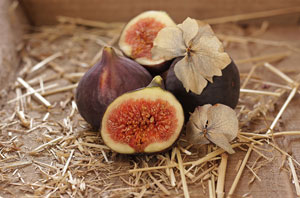Devil's Dance of Tijarafe

The devil is loose in Tijarafe! Come and enjoy the Danza del Diablo in Tijarafe, a fun, magical and explosive festival that takes place in the early hours of the 7th to the 8th of September.
What does the Devil's Dance in Tijarafe consist of?
The Devil's Dance in Tijarafe is a popular festival that takes place in the locality of Tijarafe during the early hours of the morning of the 7th to the 8th of September, an important tradition within the framework of the patron saint's festivities in honour of the Virgin of Candelaria.
The main protagonist of this popular festival is the devil, an evil figure that spits fireworks everywhere. It is made of a fibre frame, weighing about 80 kilos, with fireworks placed inside. It is carried annually by a local person, a tradition that is very popular in the town of Tijarafe.
It is a religious and cultural encounter between the popular and the pagan, symbolising the struggle between good (Virgen de la Candelaria) and evil (the devil). It was declared an Asset of Cultural Interest in 2007.
How is this festivity celebrated?
During the celebration of this great popular festival, thousands of locals and visitors flock to the Candelaria square to wait for the arrival of the devil, represented by a large puppet, and watch him burn. Thousands of people congregate in the square after having enjoyed a lively day of festivities.
"Tirirí tirirí tirirí ti ti, El Diablo is coming out". It is an expression made in unison and loudly by all those present, to attenuate the tense wait for the central character of this festivity.
The tension in the atmosphere grows, as it is not known where the devil is going to appear. His arrival is announced by a series of giants and big heads that burst into the festival without warning.
When he makes his masterly entrance, the devil bursts into fire, starting with the pitchfork, then the tail, to the beat of the music. More than 40 kilos of gunpowder are used, accompanied by light effects.
This moment culminates with the explosion of the devil's head, showing his respects to the Virgin as a sign of the final defeat of good over evil.
Origins of the Devil's Dance of Tijarafe
According to previous research on this festivity, it is estimated that this dance was incorporated into the patron saint festivities of the Virgin of Candelaria, whose central character was called Cataclismo. Years later it was renamed Diablo.
This character was built with a simple wooden frame and coves, covered with a paste mixed with lime and water to protect him from fire. It was later called Sinforiano.
Recommendations for visitors
If you want to make the most of these festivities, here are some recommendations and practical tips:
- Wear comfortable clothes and footwear.
- Take a safe distance from the fireworks.
What else can you see or do in the town if you go to Tijarafe?
We invite you to visit these magnificent places located in Tijarafe:
- Cueva de la Virgen: a place that bears witness to the legend of the arrival of the Virgin of Candelaria to Tijarafe.
- Ermita del Buen Jesús: a religious building built in the second half of the 16th century, located on the banks of the Barranco del Jurado ravine. It was declared a site of cultural interest in 1994.
- La Cruz del Time: located on the GR 131 long-distance footpath, it is related to a legend that is currently reflected in the lights that illuminate the path of lost souls.
- José Luis Lorenzo Barreto Costume Museum: located on the upper floor of the Library. It exhibits the traditional costumes of the municipalities of La Palma.
- Plaza de La Paz: surrounded by beautiful gardens, it is the ideal place for reading, meditation and children's games.
- Nuestra Señora de La Candelaria Parish Church: this is the most important religious building in Tijarafe. The titular image is a 16th century carving of Flemish origin.
Gastronomy
We invite you to taste the delicious typical dishes of Tijarafe:
- Goat meat in sauce.
- Ribs with mojo sauce and pineapples.
- Wrinkled potatoes with mojo sauce.
- Grilled fillet of bigeye tuna or tuna fish.
- Rapadura: Palmero sweet made with cane honey, gofio and almonds.
- Almendrados: almond paste tortillas baked in the oven.
- Marquesotes: sponge cakes made from wheat flour, with honeyed syrup.
Share photos, videos and interesting information about the Devil's Dance in Tijarafe on social networks. Use the hashtags #danzadeldiablo #tijarafe






